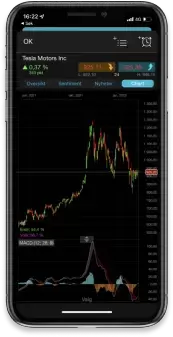It’s been a disappointing end to the week for European markets with the auto sector feeling the pain after the latest European car sales numbers for November showed another big decline.
Europe
We’ve seen big declines in the likes of BMW, Daimler and Volkswagen, as the more positive mood from earlier in the week has given way to pessimism as new restrictions and rising infection rates weigh on risk appetite heading into the weekend.
Another poor start for US markets has also dragged on wider sentiment with the Dow and S&P500 leading the move lower, after the big losses on the Nasdaq 100 yesterday.
The FTSE100 is holding up better than most despite the energy and financial sector being the worst performers today, as a big slide in oil prices has seen BP and Shell slip back.
We’re also seeing the likes of Lloyds and NatWest Group give up some of the gains that we saw yesterday in the wake of the surprise rate hike by the Bank of England.
This week’s best performers have been Ocado in a year that has seen it languish amongst the worst performing FTSE100 stocks, while AstraZeneca is also up on the week after it was found that its Evusheld antibody cocktail combination was found to work well in treating symptoms against the Omicron variant.
The travel and leisure sector is undergoing a bit of an end of week rebound after a bad week, with British Airways owner IAG amongst the best performers today, in a week that has seen the shares come under increasing pressure with the announcement of various travel bans these past few days.
US
US markets look set to finish the week very much on the back foot, finishing the week lower, and giving up some of the solid gains we saw last week. Rising concerns over rising Omicron cases as we head into the thinner liquidity conditions over the Christmas and New Year period appears to be prompting some timely profit taking.
FedEx has been a key cog in the US vaccination effort as well as a decent bellwether of US consumer demand. After warning on profits in Q1 and saying it was increasing prices, Q2 has seen the company post revenues of $23.5bn, and profits of $4.83c a share, both well in excess of expectations. The company did say that costs were still increasing, but that the increase in prices was helping to absorb those, as it reinstated its 2022 profit target to an upper target of $21.50c a share, which it cut in Q1.
Rivian’s first earnings report post IPO was a big disappointment as it posted a Q3 loss of $1.23bn, sending the shares down by over 14% and to their lowest levels since its IPO launch day. The company reported revenues of $1bn, as it began deliveries of its R1S SUV this month, however it also said that it would fall short of its 2021 production target. The target of 1,200 vehicles is expected to fall short, although pre-orders have risen to 71k, from 55,400 in October. Rivian’s biggest problem it would appear is producing enough cars at a fast enough speed to fulfil its orders and justify its eye-wateringly high valuation.
The company said it expects to start work on a factory in Georgia next year, which should complete and start production in 2024.
FX
In a fairly subdued week for FX markets, we’ve seen the pound make a three-week high against the US dollar after the Bank of England surprised the markets by raising rates by 0.15%, although it is now retreating in the face of a resurgent greenback. The latest UK retail sales numbers showed a bigger than expected jump in November rising 1.1% as consumers got their Christmas shopping in early, while October retail sales were revised up from 1.6% to 2%.Of course both these numbers are likely to see a big drop in December given this weeks restrictions, but nonetheless they bode well for a solid Q4 number, even without the slowdown this month, and the hit to services.
The US dollar has remained in favour after initially losing some ground despite the Federal Reserve meeting expectations by increasing the size of its taper program. The US dollar still looks to be the only game in town, at a time when concerns about the global economy are growing due to the speed that Omicron is spreading out across the globe.
After seeing a decent rebound last week, crude oil prices have settled down as concern over future short term demand weighs on prices, and has served to limit the upside, as rising cases of Omicron across the US and Europe temper the upside. The introduction of new restrictions and travel bans looks set to limit demand and help rebuild inventory levels which are already at multi year lows.
Gold prices have taken a leg to the upside after this week’s central bank rate meetings and look set for a strongly positive week. While the US central bank came across as hawkish, the slide in US yields suggests that markets don’t believe they will be able to deliver on their rhetoric, and this has helped push gold to its highest levels this month.
Disclaimer: CMC Markets is an execution-only service provider. The material (whether or not it states any opinions) is for general information purposes only, and does not take into account your personal circumstances or objectives. Nothing in this material is (or should be considered to be) financial, investment or other advice on which reliance should be placed. No opinion given in the material constitutes a recommendation by CMC Markets or the author that any particular investment, security, transaction or investment strategy is suitable for any specific person. The material has not been prepared in accordance with legal requirements designed to promote the independence of investment research. Although we are not specifically prevented from dealing before providing this material, we do not seek to take advantage of the material prior to its dissemination.







